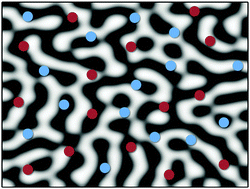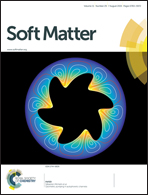Microscopic segregation of hydrophilic ions in critical binary aqueous solvents
Abstract
Solid surfaces suspended in critical aqueous binary mixtures containing hydrophilic salt have recently been found to exhibit anomalous interactions, and a possible mechanism is provided by the asymmetric solvation preferences of weakly and strongly hydrophilic cations and anions, respectively. Here we address this mechanism by studying interfacial ion distributions in a critical binary mixture of water and 2,6-dimethylpyridine containing potassium chloride at temperatures below the lower critical point, using grazing-incidence X-ray fluorescence from the liquid–vapour interface. Our data provide direct and unambiguous experimental evidence for microscopic segregation of hydrophilic ions in critical aqueous binary mixtures, thereby supporting the important role of asymmetric ion solvation in the above mentioned anomalous force. However, the experimental data are only qualitatively reproduced by state-of-the-art theoretical calculations, demonstrating the need of a microscopic theoretical model including asymmetric ion solvation.


 Please wait while we load your content...
Please wait while we load your content...